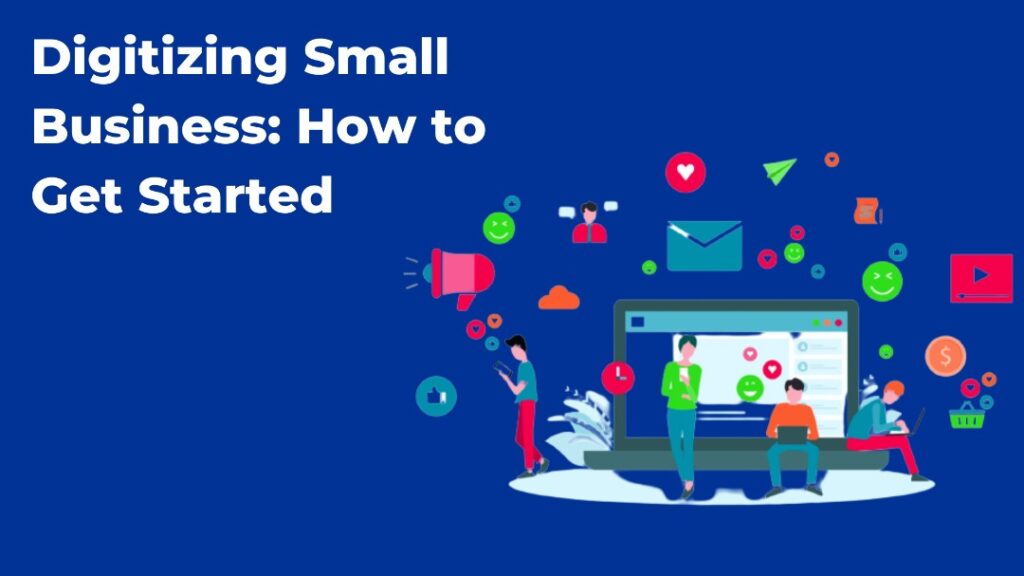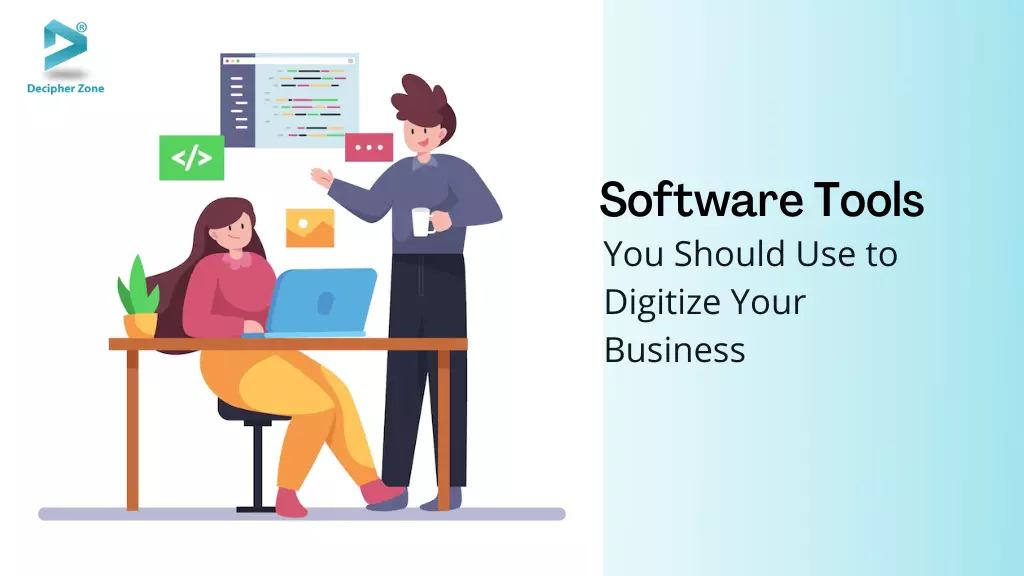Running a small business in today’s digital age can be challenging, but fear not, because there are countless opportunities awaiting you. In this article, we will explore the various strategies and tools that can help you digitize your small business, enabling you to reach new customers, streamline operations, and increase efficiency. From building an online presence to leveraging social media platforms, we will walk you through step by step, showing you how to harness the power of digital technology to transform your business and thrive in the competitive market. So, let’s get started on your journey to digitization!
1. Assess your current business processes
When it comes to digitizing your small business, the first step is to assess your current business processes. Take a close look at the systems and tools you currently have in place. This could include everything from your inventory management software to your communication tools. Analyze how these systems are currently functioning and identify any areas for improvement.
Consider the efficiency and effectiveness of each system. Are there any bottlenecks or pain points that slow down your operations? Are there tasks that could be automated to save time and reduce errors? Take note of these areas for improvement, as they will be key in shaping your digitization strategy.
In addition to identifying areas for improvement, it’s important to determine the importance of digitization in each area. Not all areas of your business may require the same level of digitization. Some processes may benefit greatly from automation and digital tools, while others may not be as crucial. Assess the impact that digitization could have on each area and prioritize accordingly.
2. Set clear goals for digitization
Once you have assessed your current business processes, it’s time to set clear goals for digitization. Take some time to define what you want to achieve through digitization. Are you looking to streamline your operations, improve customer experiences, increase efficiency, or all of the above? Clearly defining your goals will help guide your digitization efforts and ensure that you stay focused on what really matters.
After defining your goals, it’s important to prioritize them based on impact and feasibility. Consider the potential impact that achieving each goal could have on your business. Will it lead to cost savings, increased revenue, or improved customer satisfaction? Additionally, consider the feasibility of each goal. Can it be realistically achieved within a reasonable timeframe? By prioritizing your goals, you can focus your efforts on the areas that will have the greatest impact.
Once you have prioritized your goals, create a timeline for implementing each goal. Determine realistic timelines for achieving each goal and allocate resources accordingly. This will help keep your digitization efforts on track and ensure that you make steady progress towards your goals.

This image is property of vencru.com.
3. Upgrade your hardware and software
To effectively digitize your small business, it’s important to assess your current technology infrastructure. Take a close look at your hardware, such as computers, servers, and networking equipment. Determine if any upgrades or replacements are necessary to support your digitization efforts. Outdated hardware can limit your ability to leverage new software and technologies, so it’s important to invest in suitable hardware.
In addition to hardware upgrades, research and invest in suitable software solutions for different business functions. Whether it’s accounting software, project management tools, or customer relationship management (CRM) systems, there are many software options available to help streamline your operations. Consider your specific business needs and choose software solutions that align with your goals and processes.
One option to consider is cloud-based services. Cloud computing offers flexibility and scalability, allowing you to access your data and software applications from anywhere with an internet connection. This can be particularly beneficial for small businesses with remote or mobile workforce. By leveraging cloud-based services, you can enhance collaboration and ensure that your business processes are not tied to a physical location.
4. Automate manual processes
Automation can be a game-changer when it comes to digitizing your small business. Identify repetitive and time-consuming tasks that can be automated. This could include anything from data entry to order processing. By automating these tasks, you can save time, reduce errors, and free up resources for more value-added activities.
Research and implement automation tools that are suitable for your business needs. There are many software solutions available that can automate various aspects of your business, such as email marketing automation or inventory management automation. Take the time to explore these options and choose tools that align with your goals and processes.
Once you have implemented automation tools, it’s important to train your employees and ensure a smooth transition. Provide comprehensive training on how to use the automation tools and communicate the benefits of automation. This will help your employees understand the value of digitization and alleviate any concerns they may have about job security. By involving your employees in the digitization process, you can foster a culture of continuous improvement and innovation.

This image is property of startupsavant.com.
5. Develop a digital marketing strategy
In today’s digital age, having a strong online presence is essential for small businesses. Developing a digital marketing strategy can help you reach a wider audience and attract more customers. Start by defining your target audience and marketing goals. Who are your ideal customers and what do you want to achieve through your digital marketing efforts? This will help guide the rest of your strategy.
Establishing a strong online presence is key to a successful digital marketing strategy. This starts with creating a professional website that showcases your products or services. Your website should be mobile-friendly, easy to navigate, and optimized for search engines. In addition to a website, it’s important to utilize social media platforms to connect with your audience and build brand awareness.
Search engine optimization (SEO) techniques are crucial for improving your website’s visibility in search engine results. Research keywords that are relevant to your business and incorporate them into your website’s content. This will help improve your organic search rankings and drive more traffic to your site.
Implementing digital advertising campaigns can also be an effective way to reach your target audience. Consider using platforms like Google Ads or social media advertising to target specific demographics and locations. Monitor and analyze the performance of your digital advertising campaigns to optimize your efforts and maximize your return on investment.
6. Enhance customer experience through technology
Technology can greatly enhance the customer experience and differentiate your small business from the competition. Implement customer relationship management (CRM) systems to effectively manage your interactions with customers. CRM systems can help you track customer information, manage leads and opportunities, and provide personalized experiences.
Offer self-service options through a website or mobile app. This could include features like online ordering, appointment scheduling, or customer support portals. By providing self-service options, you can empower your customers and save time for both parties involved.
Utilize chatbots for instant customer support. Chatbots can provide quick and automated responses to commonly asked questions, helping to improve response times and customer satisfaction. They can also guide customers through the buying process and offer personalized recommendations.
Gather customer feedback through online surveys or reviews. This can help you better understand your customers’ needs and preferences, allowing you to tailor your products or services accordingly. Engage with your customers on social media platforms or through email marketing to foster a sense of community and build loyalty.
Utilize data analysis to personalize interactions with customers. By analyzing customer data, you can gain insights into their preferences and behaviors, allowing you to deliver personalized experiences. This could include personalized product recommendations, targeted marketing campaigns, or customized communication.

This image is property of i.ytimg.com.
7. Secure your digital assets
As your small business becomes more digitized, it’s important to prioritize cybersecurity. Implement strong cybersecurity measures to protect your valuable digital assets and customer data. This includes using firewalls and encryption technologies, regularly updating and patching software and devices, and implementing multi-factor authentication.
Train your employees on cybersecurity best practices. Educate them on the importance of strong passwords, phishing awareness, and safe browsing habits. Regularly remind them to be vigilant and report any suspicious activity or potential security breaches.
Regularly backup important data and implement disaster recovery plans. This will help ensure that your business can quickly recover from a potential cyber-attack or data loss event. Consider using cloud-based backup solutions to securely store your data off-site.
8. Foster a digital culture within your organization
Digitization is not just about implementing new technologies; it’s also about fostering a digital culture within your organization. This starts with educating and training your employees on digital tools and processes. Provide comprehensive training on how to use the digital tools and encourage your employees to embrace and adapt to new technologies.
Encourage innovation and continuous learning within your organization. Emphasize the importance of staying up-to-date with emerging technologies and trends. Encourage your employees to share ideas and explore new ways of doing things. By fostering a culture of innovation, you can drive continuous improvement and stay ahead of the competition.
Provide tools and resources for remote work. As more businesses embrace remote work, it’s important to provide your employees with the necessary tools and resources to be productive. This could include providing laptops, collaboration software, and secure remote access to company resources.
Foster collaboration through digital platforms. Use tools like project management software or team collaboration platforms to facilitate communication and collaboration among your team members. Encourage cross-functional collaboration and provide opportunities for your employees to share knowledge and expertise.

This image is property of ares.decipherzone.com.
9. Monitor and measure the impact of digitization
To ensure the effectiveness of your digitization efforts, it’s important to monitor and measure their impact. Establish key performance indicators (KPIs) that align with your goals and use analytics tools to track progress and outcomes. This could include metrics such as website traffic, conversion rates, customer satisfaction scores, or employee productivity.
Regularly evaluate the effectiveness of your digitization efforts. Analyze the data and identify areas where improvements can be made. Are you meeting your goals? Are there any bottlenecks or areas for further improvement? Use the data to make informed decisions and prioritize adjustments and improvements.
Make adjustments and improvements based on the data. Continuously optimize your digitization efforts to maximize their impact and return on investment. This could involve refining your digital marketing strategies, optimizing your website for better search rankings, or reevaluating your automation tools and processes.
10. Stay updated with technological advancements
Finally, it’s important to stay updated with technological advancements and continuously evaluate and upgrade your digitization strategies. Technology is constantly evolving, and new tools and solutions are emerging all the time. Stay informed about emerging technologies that are relevant to your business through industry publications, online resources, and professional networks.
Attend industry conferences and seminars to stay up-to-date with the latest trends and innovations in your industry. This will give you the opportunity to learn from experts, network with other small business owners, and explore new opportunities for digitization.
Networking with other small business owners can be invaluable in sharing insights and experiences. Join industry-specific forums or networking groups to connect with like-minded individuals. Learn from their successes and challenges, and exchange ideas and best practices.
Continuously evaluate and upgrade your digitization strategies as needed. Regularly assess the effectiveness of your current technologies and processes and be open to adopting new tools and solutions that can further enhance your digitization efforts. Embrace the mindset of continuous improvement and innovation to stay ahead of the competition.

This image is property of cocosolution.com.
